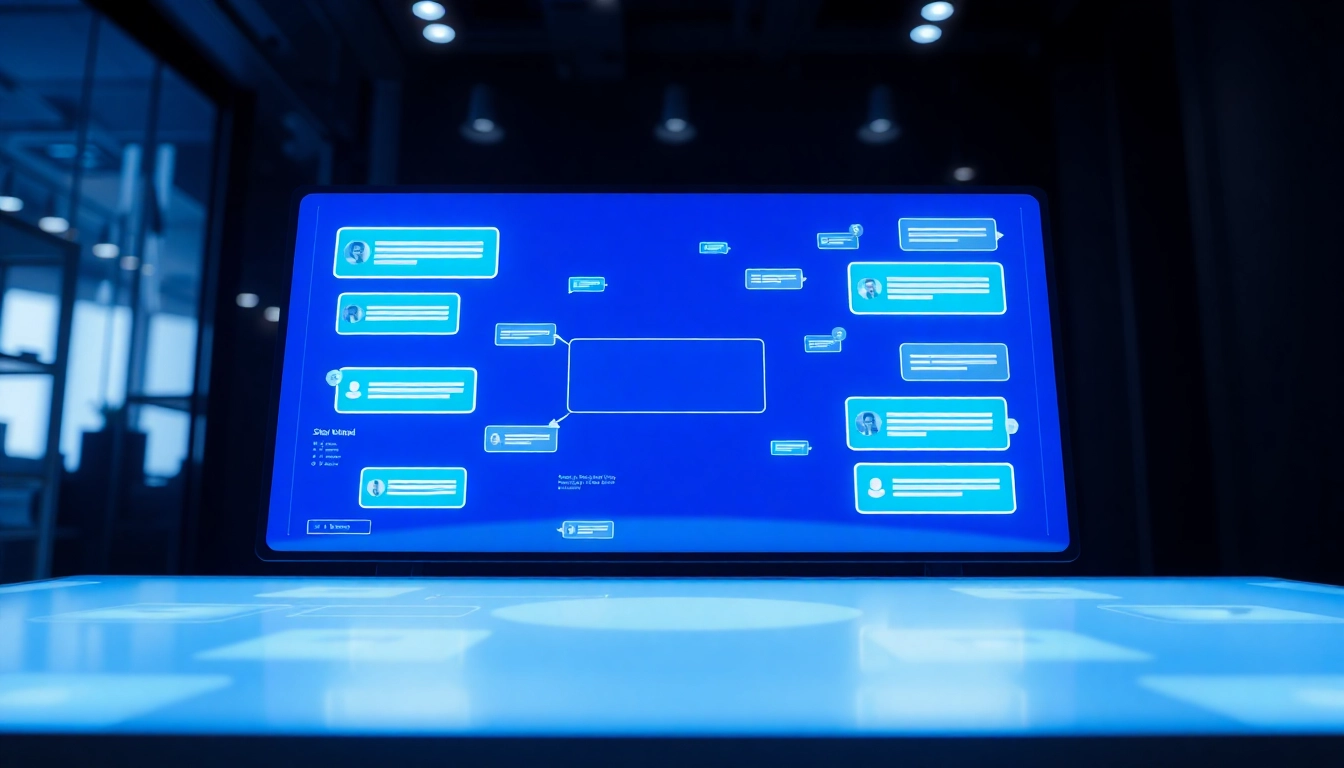Introduction to Building a WhatsApp Bot
In the digital era, instant communication has become the cornerstone of exceptional customer service. Customers expect quick responses, personalized interactions, and seamless engagement channels. Among the most prevalent messaging platforms, WhatsApp stands out as a dominant tool for businesses aiming to connect efficiently with their clientele. To capitalize on this, many organizations are exploring how to whatsapp bot bouwen—building a reliable and intelligent chatbot that automates customer interactions. This comprehensive guide delves into the essentials of creating an effective WhatsApp bot, leveraging automation to enhance your business operations and customer satisfaction.
What is a WhatsApp Bot and Why is it Valuable?
A WhatsApp bot is an automated conversational agent designed to interact with users via the WhatsApp platform. This bot can perform various functions, from answering FAQs and providing product information to booking appointments or processing inquiries. Unlike manual responses, a WhatsApp bot operates continuously, ensuring your customers receive immediate, consistent, and accurate information regardless of time or workload constraints.
The value of a WhatsApp bot lies in its ability to streamline communication, reduce operational costs, and improve customer experience. By automating routine queries, your team can focus on more complex, value-added tasks. Additionally, with WhatsApp’s widespread usage—over 2 billion users globally—integrating a chatbot into this platform allows businesses to meet customers where they already are, fostering trust and engagement.
For businesses seeking to develop such a bot, understanding the fundamental capabilities and strategic benefits is key. Automating customer interactions through a WhatsApp bot not only elevates service standards but also enhances branding by providing a modern, accessible channel for engagement.
Key Benefits for Business Communication
- 24/7 Availability: Customers expect quick responses, and a WhatsApp bot ensures your business is always reachable, even outside traditional operating hours.
- Consistent Customer Experience: Automated responses maintain a uniform tone and accurate information, minimizing errors and misunderstandings.
- Efficiency and Cost Savings: Automating common queries significantly reduces the workload on customer support teams, saving time and resources.
- Personalized Interactions: Advanced chatbots can tailor responses based on user data, preferences, and past interactions, creating a more engaging experience.
- Improved Lead Generation and Lead Nurturing: Automated conversations can guide prospects through sales funnels, schedule callbacks or appointments, and collect valuable information.
Studies show that businesses employing automated WhatsApp communication observe higher engagement rates and increased customer satisfaction metrics. Moreover, automation helps manage high volumes of inquiries efficiently, especially for service-oriented companies, retail, real estate, and hospitality sectors.
Core Elements of a Successful Chatbot Strategy
Developing an effective WhatsApp bot requires a clear strategy that aligns with your business goals. Here are the essential components:
Understanding Customer Needs
Identify common questions, pain points, and desired interactions. Conduct surveys, analyze chat logs, or gather feedback to understand what your customers expect from automated interactions.
Designing Natural Conversation Flows
Structure your chatbot conversations to mimic natural dialogue. Use clear, friendly language that reflects your brand’s tone. Incorporate fallback options for when the bot cannot resolve an issue, ensuring seamless escalation to human agents.
Defining Success Metrics
Set measurable goals such as response time reduction, customer satisfaction scores, resolution rates, and conversion metrics. Regularly analyze these KPIs to refine your chatbot’s performance.
Personalization and Humanization
Implement features that allow your bot to adapt responses based on customer data, previous interactions, or preferences. Avoid robotic language; instead, aim for a tone that resonates with your audience.
Integration with Business Systems
Connect your WhatsApp bot with CRM, booking systems, email automation, and other tools. This integration allows for a unified customer experience and efficient data management.
Step-by-Step Guide to Developing Your WhatsApp Bot
1. Define Your Use-Case and Customer Needs
Start by clarifying what functions your WhatsApp bot should perform. Common use cases include answering FAQs, booking appointments, providing product or service information, or guiding users through complex processes. Analyze customer inquiries to understand their primary needs, pain points, and preferred interaction types.
2. Choose the Right Platform and Tools for Building
Building a WhatsApp bot requires selecting suitable infrastructure. Options range from no-code platforms to custom development with APIs. For non-technical users, platforms like FlowBuildr offer comprehensive solutions that support whatsapp bot bouwen without deep coding knowledge. Technical teams can leverage official WhatsApp Business API and integrate with tools like Make, Airtable, or CRMs to customize workflows and functionalities.
3. Designing the Conversation Flow and Testing
Develop detailed conversation scripts that cover various customer journeys. Use flowcharts to visualize interactions, including greetings, FAQs, decision trees, and escalation points. Test these flows internally to identify gaps or confusing paths, then make iterative improvements based on real user feedback and analytics.
4. Implementing and Integrating Technologies
Connect your chatbot with the official WhatsApp Business API, ensuring compliance with WhatsApp’s policies. Integrate with your CRM to personalize conversations and track customer interactions. Add functionalities like appointment scheduling, email notifications, or payment gateways where necessary. Prioritize data security and privacy, adhering to GDPR and other applicable regulations.
5. Automating and Personalizing Customer Interactions
Set triggers based on user actions to automate follow-ups, reminders, or personalized offers. Use AI and machine learning where applicable to improve understanding and response accuracy. Leverage tools like Make or Airtable to dynamically tailor interactions and collect insights.
6. Launch, Monitor, and Optimize
Deploy your WhatsApp bot to a selected customer segment initially. Monitor performance through metrics such as engagement rates, resolution times, and user feedback. Use these insights to iterate on conversation flows, introduce new functionalities, and enhance the overall user experience.
7. Maintaining and Scaling Your Bot
Regularly update content based on changing customer needs or business goals. Scale your chatbot to serve multiple languages, expand functionalities, and integrate with additional platforms as your business grows.
Technical Implementation and Integrations
Utilization of Official WhatsApp API’s and Connections
The foundation of any professional WhatsApp bot is the official WhatsApp Business API, which provides the necessary tools for reliable, scalable communication. Partnering with authorized providers ensures compliance with WhatsApp’s policies, security standards, and access to features like multimedia messaging, read receipts, and chatbot integrations.
Integration involves creating a developer account, setting up phone numbers, and configuring webhook URLs to handle incoming and outgoing messages. Developers often employ SDKs or platform interfaces to streamline this process.
Connecting with CRM, Email, and Scheduling Systems
To deliver a personalized and efficient experience, your WhatsApp bot should seamlessly connect with your existing systems. For instance, integrating with CRM solutions like Salesforce or Airtable enables the bot to retrieve customer data, personalize responses, and log interactions automatically.
Coupling with calendar tools facilitates appointment booking and reminders. Email integrations allow for follow-up communications and receipt dispatch, ensuring a comprehensive customer journey.
Automation Strategies and Best Practices
Automation isn’t just about message sending; it’s also about intelligent workflows. Use conditional logic to direct users based on their inputs, automate repetitive tasks, and trigger notifications. Employ AI-driven natural language processing (NLP) to interpret vague questions and provide relevant responses.
Consistent monitoring and updating are vital. Regularly analyze chat logs to identify bottlenecks or ambiguous user inputs, then refine your scripts accordingly for better performance.
Best Practices and Measuring Success
Optimizing Customer Experience and Tone of Voice
Your WhatsApp bot should reflect your brand personality. Whether it’s formal, friendly, or playful, maintaining a consistent tone builds trust. Personalization through customer data enhances engagement and shows attentiveness.
Use clear language, avoid jargon, and set expectations upfront regarding what the bot can handle. Incorporate human fallback options for complex queries to ensure no customer feels ignored.
Tracking Performance and Conversion Metrics
Measure KPIs such as response time, resolution rate, customer satisfaction (CSAT), and chatbot engagement levels. Use analytics platforms to gain insights into user behavior, common questions, and drop-off points. These insights guide ongoing improvements to your chatbot’s functionalities and content.
Ensuring Security and Regulatory Compliance
Data privacy is paramount, especially when handling personal information. Secure your systems with encryption, maintain compliance with GDPR and other relevant laws, and be transparent with customers about data usage. Regular audits and updates ensure ongoing security and trustworthiness of your automation infrastructure.
Frequently Asked Questions and Tips for Further Automation
How to Start Without Technical Knowledge?
Many no-code platforms allow you to build a WhatsApp bot through drag-and-drop interfaces and intuitive workflows. Engage with providers like FlowBuildr, which offer end-to-end solutions with minimal technical expertise required. Additionally, online tutorials, webinars, and customer support teams can provide guidance throughout your journey.
How to Prevent Customer Frustrations?
Clearly communicate the scope of your bot, set expectations at the beginning of the interaction, and provide easy access to human support. Regularly update the conversation flows based on user feedback, and ensure fallback options are available when the bot cannot resolve an inquiry.
Features That Make Your WhatsApp Bot Stand Out
- Multi-Language Support: Catering to diverse customer bases
- Rich Media Messaging: Including images, videos, and documents for a richer experience
- Personalized Recommendations: Based on purchase history or browsing behaviors
- Automated Follow-ups: Reminders, feedback requests, and cross-selling opportunities
- Integration with AI and NLP: For more natural, human-like conversations
Investing in these features will elevate your automation efforts, providing a competitive edge and ensuring your customers receive exceptional service even outside office hours.



